Dave Waddell catches up with our exploration specialist and pro guide Squack Evans, discussing a shared love of walking in the wild, what it feels like to ‘participate in the circle of life’, the best walking safari locations, and Squack’s dream walk. Squack’s extraordinary knowledge and experience always make for an engaging conversation. Enjoy and we hope these words inspire an adventure to be taken on your own two feet.
What is it about walking in the wild that is so different from any other mode of adventure travel?
When you’re in any mode of transport, be it a plane, helicopter, vehicle or motorbike, you will have a sense of security that can make you somehow removed from what’s going on around you. You are an observer; you are not a participant. The minute you are on your own two feet, the dynamic becomes very different. You are now part of the circle of life and witnessing it to a large degree. Your behaviour when you get seen by an animal, when your presence is picked up on, is very different and your presence has more of an effect on the animals. Animals have largely learnt to ignore vehicles. As a passenger in a helicopter, you’re just beating overhead, getting a passing glimpse as you make your noisy way past. Walking is very much more about being an active participant rather than an observer.
I love that, the notion of participation, and the fact that not only are you watching, but you’re being watched. How much does it affect our behaviour being on the ground? You guide people who may be doing a walking safari for the first time, but also what about yourself? You are presumably a different person when you’re walking in the wild.
Yeah, 100 percent. You are much more in tune with your environment because your life could depend on it. Again, it can be dramatised and hyped up, but the potential for a dangerous situation is very real. You have to be aware of what’s going on. You must have all your senses working; sight, smell, touch and hearing. These tend to get neglected when you’re in a vehicle. When you’re on your own two feet and walking within a big game area, everything comes into play because it’s all heightened. For instance, a bird call that’s alarming suddenly can lead you to something that you would never have spotted before. Or you might pick up a leopard track, follow it and potentially bump into the animal as it rushes off into the distance. Most animals, when you’re on two feet, look at you and perceive you for what you are, a human being, which is frankly the ultimate predator. For hundreds of thousands of years, animals have learnt to fear things on two legs. This generally means if they catch sight of you, they will run away. But, if you get too close by mistake and surprise them, then there’s potential for them to go into attack mode as this is their best (albeit last) form of defence. So long as you are not too close, they will almost always run away from you.
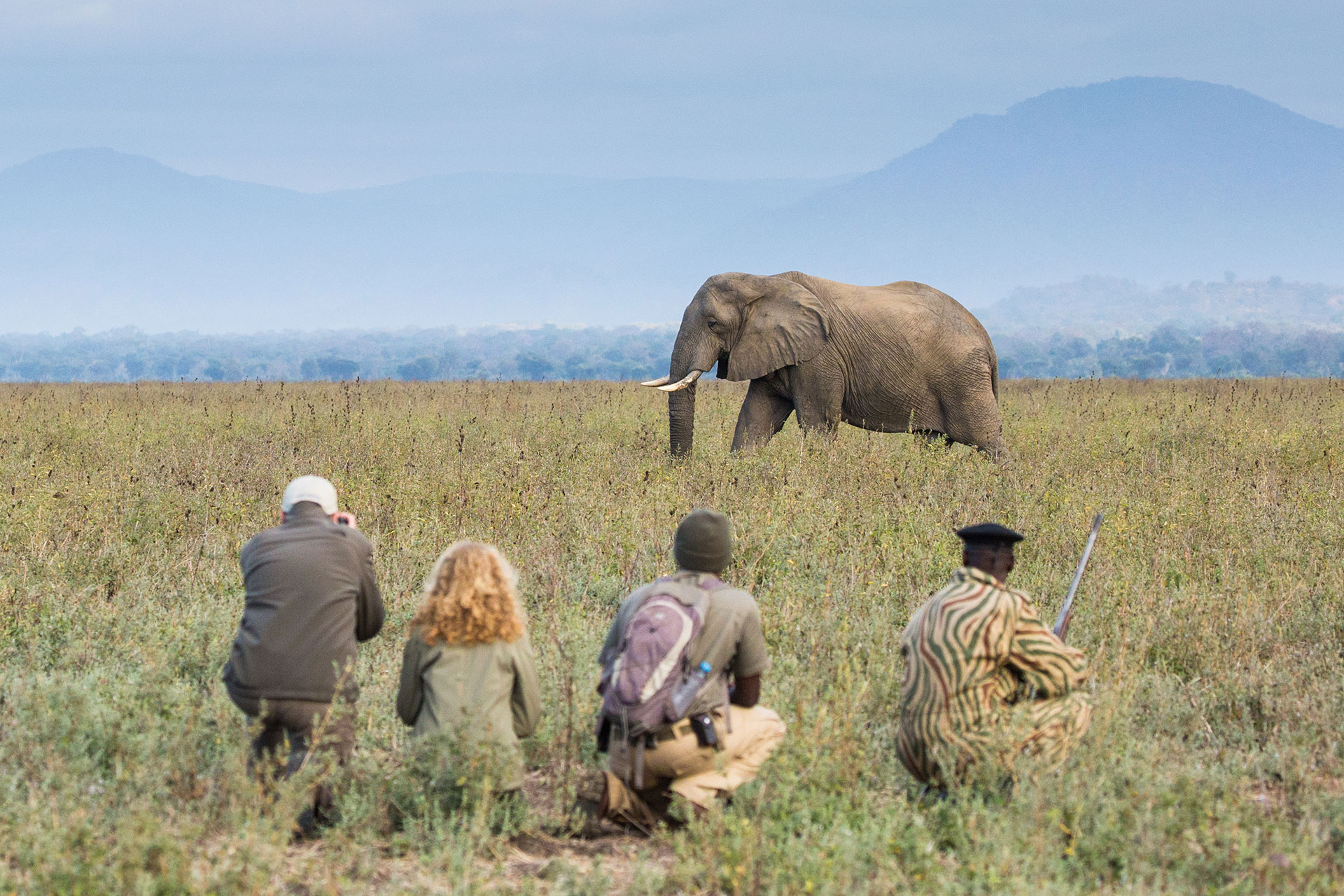
Where can you walk and when you do walk, can you walk with children? How old can they legally be? And what would your advice be in your experience of walking with children?
Walking in terms of an activity can be done in almost every safari country that we operate in. For the longer multiple-day safaris, you’re looking at South Africa, Zimbabwe, and Zambia, which is considered the home of walking even though it’s been going on elsewhere for a long time. Tanzania and Kenya are also great for longer journeys. Then there are other places which offer more of a trekking experience where it’s less about the wildlife and more about the landscape, such as Ethiopia. But for the walking safari, it’s east and southern Africa.
The reality is that many camps and parks will have an age restriction. In Tanzania and Zambia, walking is restricted to persons above the age of 12. It does vary though, and some will even have an over 18 policy. A big exception is Kenya, which seems to be where walking with kids is possible. However, this won’t be the serious wildlife walking expected of Zimbabwe and Zambia. Naturally, the focus isn’t on approaching animals and getting close to them. It tends to be more about walking from A to B, from one camp to the next, with fun activities in between. A great one is a camel safari. I guided many a camel safari in my younger days in Kenya and it is a fantastic way to do a safari with kids because there’s no age restriction. You can approach wildlife and get close to elephant, but it’s done in a very safe manner. You can pick up things like lion and leopard tracks. You can even approach wild dogs if lucky enough to find them.
Walking in Kenya, you have a plethora of really wonderful experiences with wildlife but there’s also a whole bunch of other elements in the mix. There’s swimming in the river and rock climbing. You can walk in the morning and then in the afternoon do something completely different, making it more of a varied, and exciting experience for families.
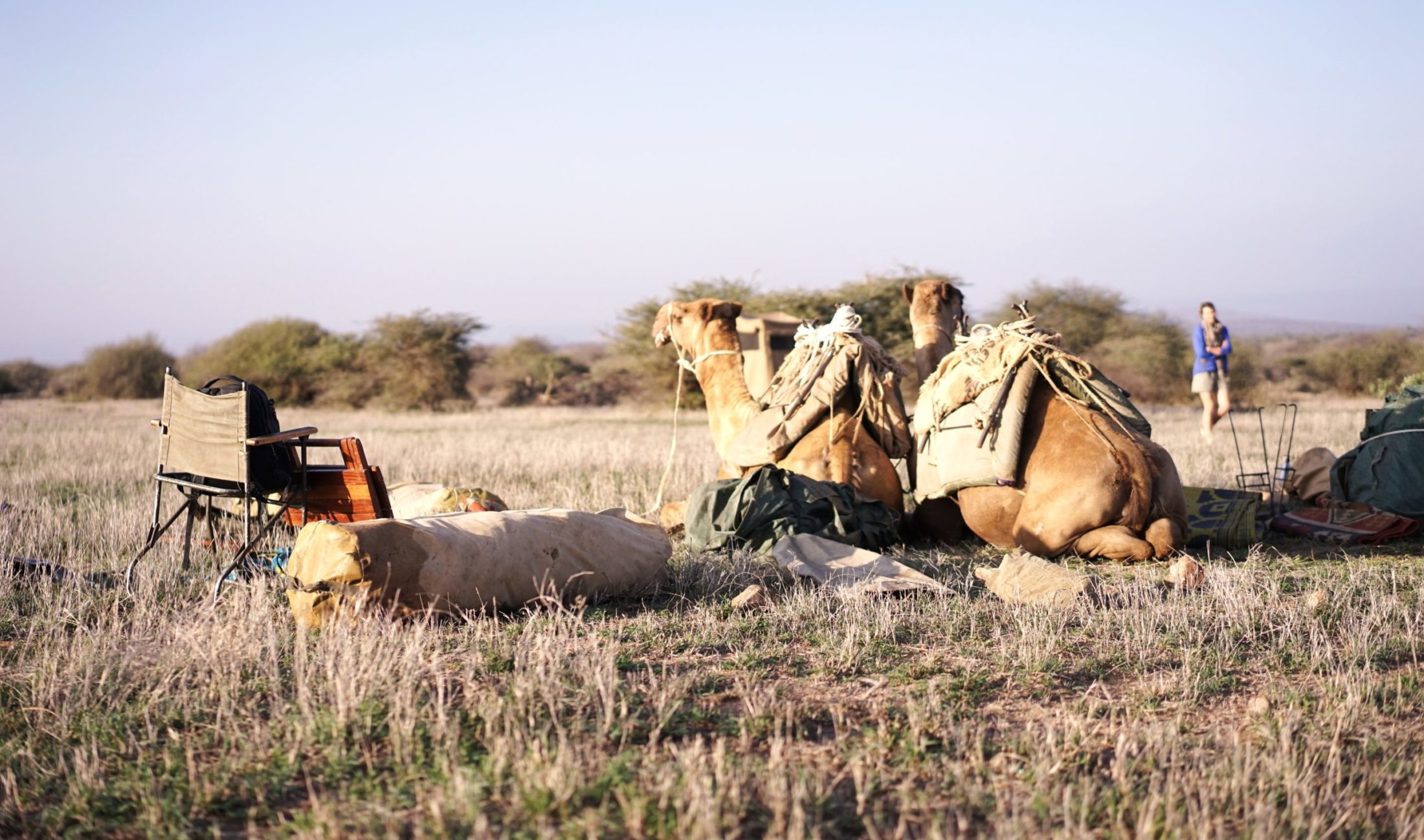
For first time travelling parents, I can imagine there being some anxiety around walking, but I know from my own experience that this changes once on the ground. Does this ring true for you, Squack?
Generally, people can be nervous to start with for about the first hour of the walk. It’s normal to be looking over your shoulder every five minutes or checking behind every bush. But, as time goes on, people naturally relax and settle into the flow of it. In the Laikipia region, where I do a lot of walking, you are often guided by the local Laikipiak Maasai (Ndorobo) people, who have lived in this landscape all their lives, which adds to guests feeling safe and at ease. You’re out there, talking and learning together. The walking part is very calming. It’s only when you pop around a bush and see something or discover tracks, that the excitement begins to build, and the adrenaline is pumping again. By this point, everyone has started to enjoy the experience of being out in nature. As a guide myself, I know how important it is to build that initial trust, so guests are confident in your abilities.
I was struck by your thought at the beginning about participating in the circle of life. Do you think in some way the experience of walking connects us with an ancient part of ourselves?
Personally, I’m a pretty practical person, and just love the act of being out there. But yes, I can see how it can cause a spiritual awakening in some people, in terms of being connected back to something they’ve maybe been removed from for so long. Again, I take it as a practical thing, maybe because I’ve spent most of my life doing it. The bush is my happy place. I suppose you can say it’s my church. My place of being. It’s such a big part of who I am. But I can understand how for people who don’t regularly spend time in nature, it can be quite the awakening.
I know you have two boys. Do you take your family on these walks?
We try to do it as often as we can. The boys love it, particularly activities like finding tracks and spotting birds and things like that. They get really into it, and especially into all the little things, which you don’t have a chance to see from a car. When you’re on foot, it’s slow and it takes a lot more time to cover ground. This pace allows you to discover a deeper layer or story of the landscape. You can tell from a feather what happened to its owner or what a leopard was doing from its tracks or that a black rhino’s been feeding from branches cropped at a 45° angle. You get to discover all these details together, as a family. It’s a much slower, more in-depth way of looking at things. There’s a closeness where the focus is on the minutiae of life. And then if you do come by something big, you get yourself in a position where you can both be safe and get close without the animal detecting you. It’s a real thrill to stalk and get up close and spend time in the animal’s presence, hopefully without them knowing that you were there.
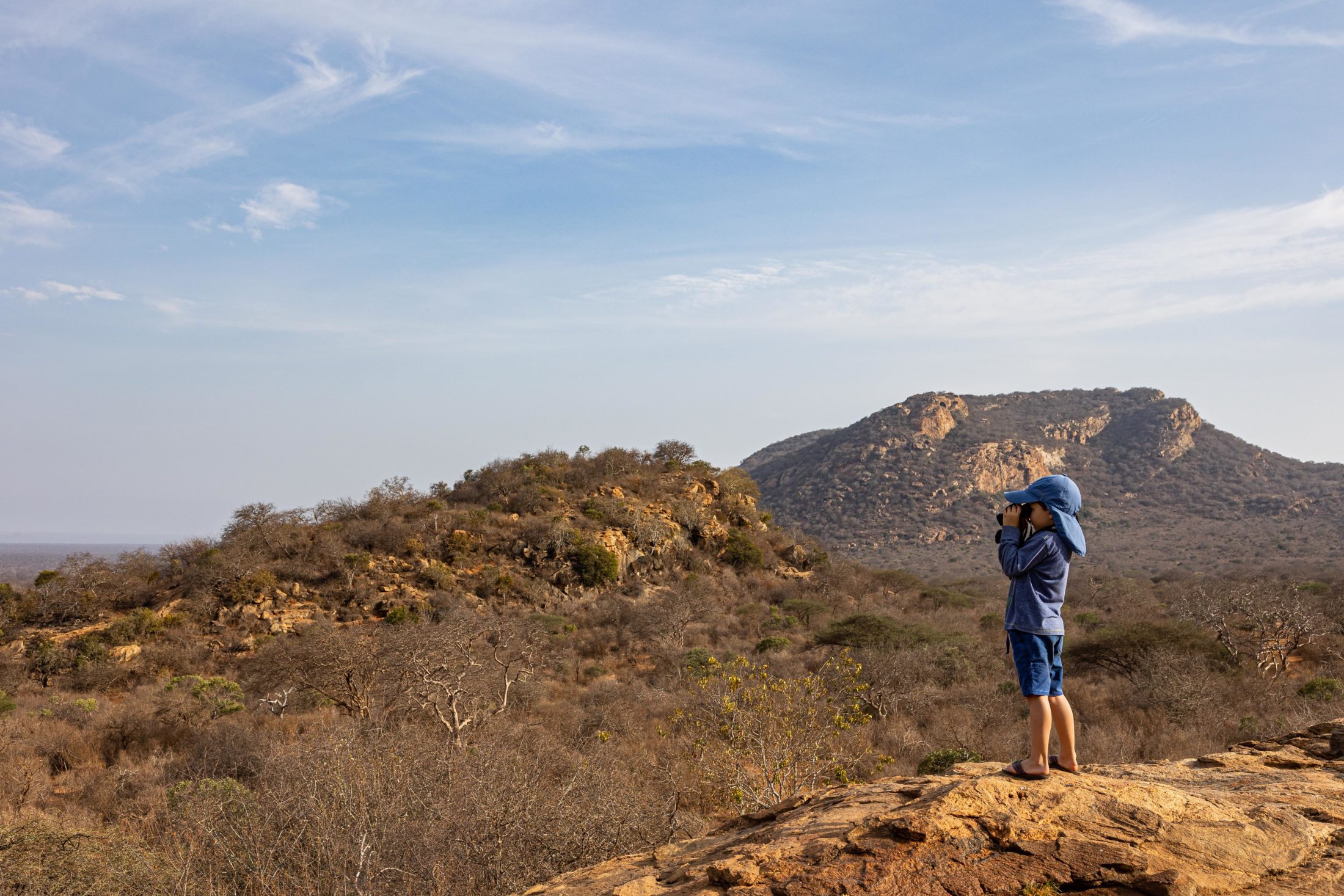
You were saying earlier that eyesight is by far the major sense used when you’re in a vehicle. Once you get on the ground, however, you start to use and integrate all your senses. When you’re working with people who’ve grown up here, this is their homeland. What level of integration are we talking about there?
Sure, the Ndorobo are way more in tune and have learned to pick up on the most subtle sense. They’re really listening. It’s not that their hearing is particularly better. It’s that they hear the alarm call and process it as an alarm call. You can be wandering along and hear a honeyguide calling and if you’re not in tune, it can be calling all it likes from 10 feet above your head and you’re not going to know what to do with it. Whereas if you’re in tune, you’ll pick up that he’s calling to you to go and look for honey. The Ndorobo are so fine-tuned that they pick up on the slightest of pieces of information – the way, for example, the grass you’re walking through tells a story impossible for most of us to see, let alone unpack.
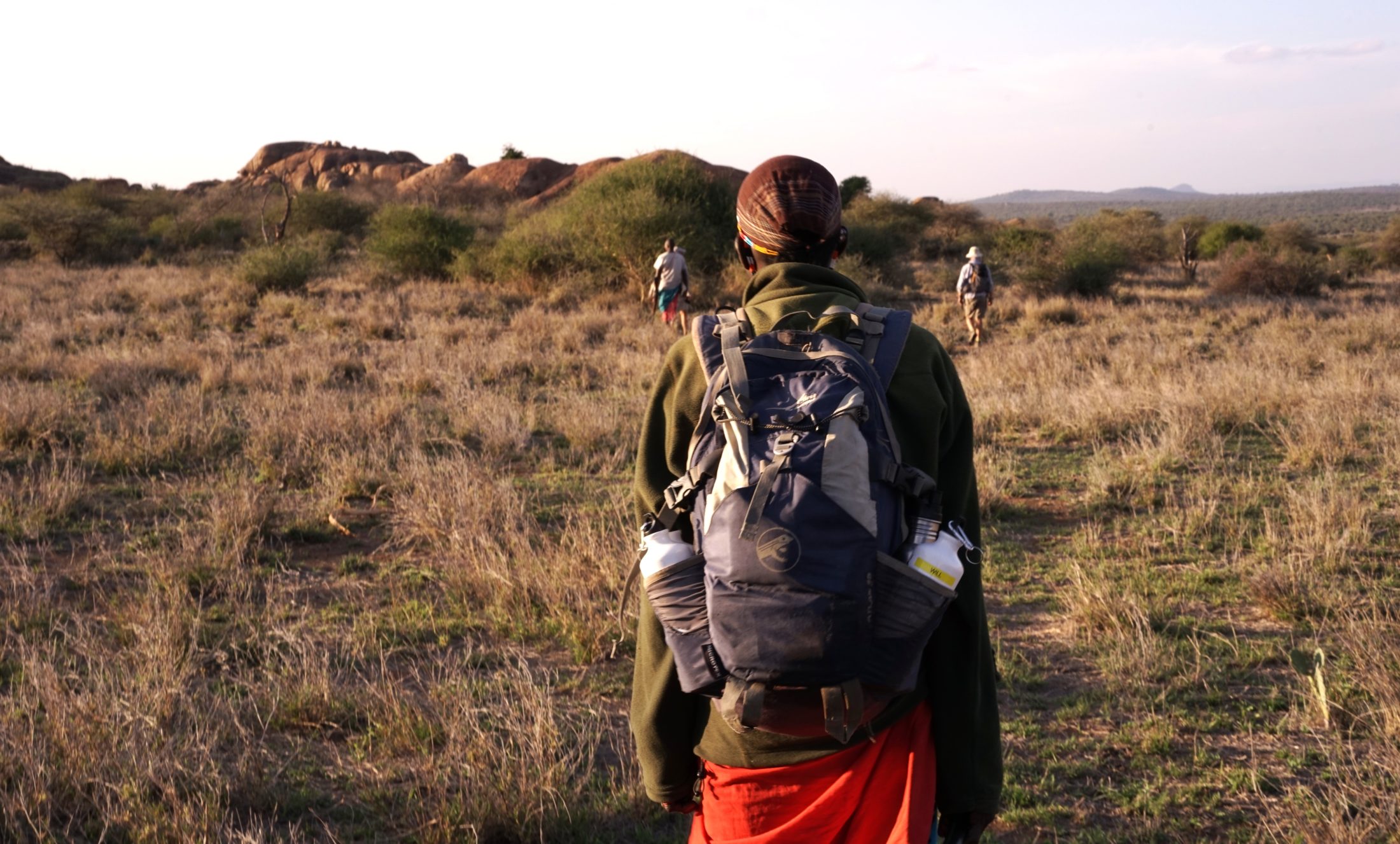
Loita Hills in Kenya, the lower Zambezi in Zambia, and Ugalla in Tanzania – these are all places that are great for walking, though very different terrains. Can you speak a little to each, Squack?
I’ve actually never done the Loita Hills walk. It’s one I’m desperate to do and hopefully will get to it soon. But I know it’s one fairly suitable for kids, maybe not the very young ones, but great for over 10s. It would entail walking with packed donkeys carrying all of your gear and a lightweight camp. It’s going through some forested areas, some more open areas, and setting up camp along the way. It’s fairly high altitude. While I’ve not walked it, I’ve flown over that area, and it’s absolutely stunning.
I love the wildness of the Lower Zambezi. It’s a very different kind of walking to something like the Loita Hills experience. Generally, you’re not doing a multi-day walk, but rather walking out of camps for several hours, keeping mainly to the river. The draw here is that you’re next to a water source and in a massive and active game area. The chances of bumping into elephant, buffalo, or lion are reasonably good. And hippo, of course: there’s lots and lots of hippos. So it’s very, very exciting walking in terms of getting close to these big mammals. It’s the sort of intense big game experience many people after, that real kind of adrenaline-rush walking.
I went to Ugalla last year. It’s a fabulous walking country in central western Tanzania and makes a wonderful circuit when combined with Katavi and Mahale, giving you a perfect balance of activities: walking in Ugalla, good game viewing in Katavi, and then onto Mahale for the chimpanzee experience and a bit of relaxation on Lake Tanganyika. Ugalla is an ex-hunting block turned over to a national park. It has wildlife there, though not masses of it, and it is truly a proper, proper wilderness. It’s absolutely wonderful.

Obviously, depending on the country and area, there will be good, average, and poor times to walk. Can you expand on this?
Generally speaking, walking in the wet season and during the early dry season – when there’s lots of vegetation and tall grass – tends to be less fun and more unpredictable. Visibility is compromised and the chances of stumbling into something by accident is higher. Certainly, in some countries, if the grass level is too high, they don’t allow walking. Being more arid terrain, northern Kenya’s great to be out walking pretty much all year round as the grass never gets that long. The trade-off, however, is lower densities of wildlife than you might get somewhere like the Lower Zambezi or Mana Pools in Zimbabwe.
What levels of fitness are we talking about here, Squack? I note that walks can range from five to 25 kilometres per day.
You tailor it to what people can manage. When travellers arrive, we discuss what people feel they can and can’t manage, and adjust the plan and route accordingly. You can do multi-day walks even if you’re not hugely fit, but we then ensure that we set the next overnight camp at a lesser distance, or walking part of the way and using a vehicle to cover the rest. The bigger multi-day walks need to have a vaguely decent level of fitness. However, only to a point: it’s much more important that the walk is tackled with the right state of mind, taken slowly, allowing for time to rest, rehydrate, and take meals. It’s not a race and it’s not a marathon. It’s generally a very leisurely, very slow, very engaging experience. The kilometres and time just drift on as you go about your day at a walking pace.
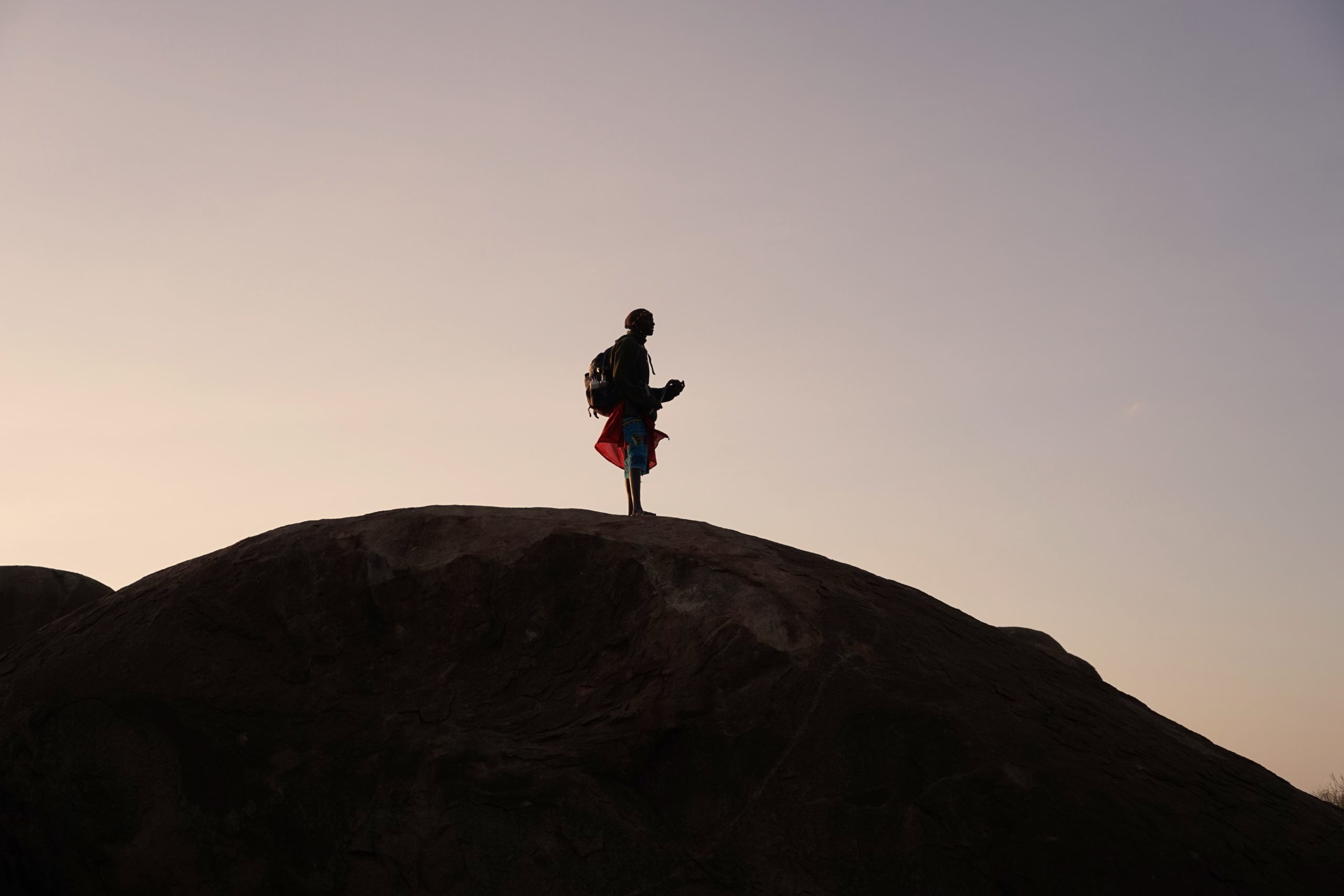
If you could wave a magic wand, where would you like to walk and why, somewhere that perhaps you’ve always wanted to, but for one reason or another haven’t?
I’ve long dreamt of walking from the north to the south of the Serengeti. This would be the walk of a lifetime. I’d love to do it relatively unsupported, with a vehicle resupply meet-up every three to four days. I can think of nothing more wonderful than walking from one set of kopjes to the other. I love those big granite kopjes. They’re these islands of life and diversity in the middle of a plain or a patch of woodland. I grew up in an area with lots of them and the Serengeti is full of them. It would be a huge amount of fun. Unfortunately, it’s probably a pipe dream – it’s nearly impossible to get permission to do such a walk, with the Serengeti being a national park.
A big thank you to Squack for taking the time to chat all things walking. If anything covered has piqued your interest, please do get in touch. As seen, there are endless options out there for walking, whether solo, as a couple, or with your children.
